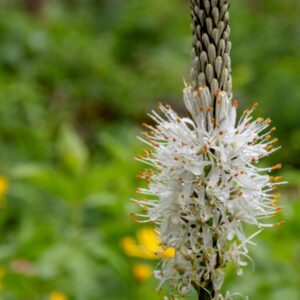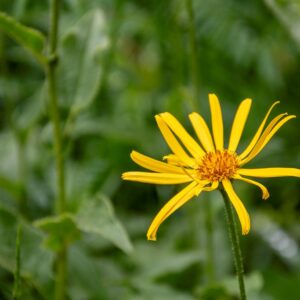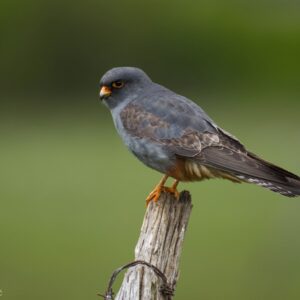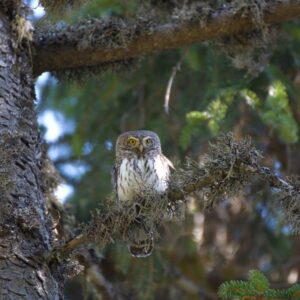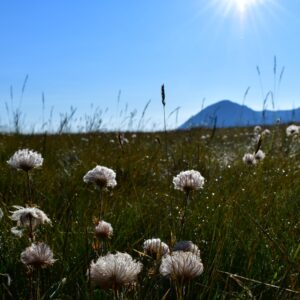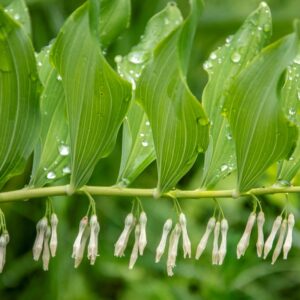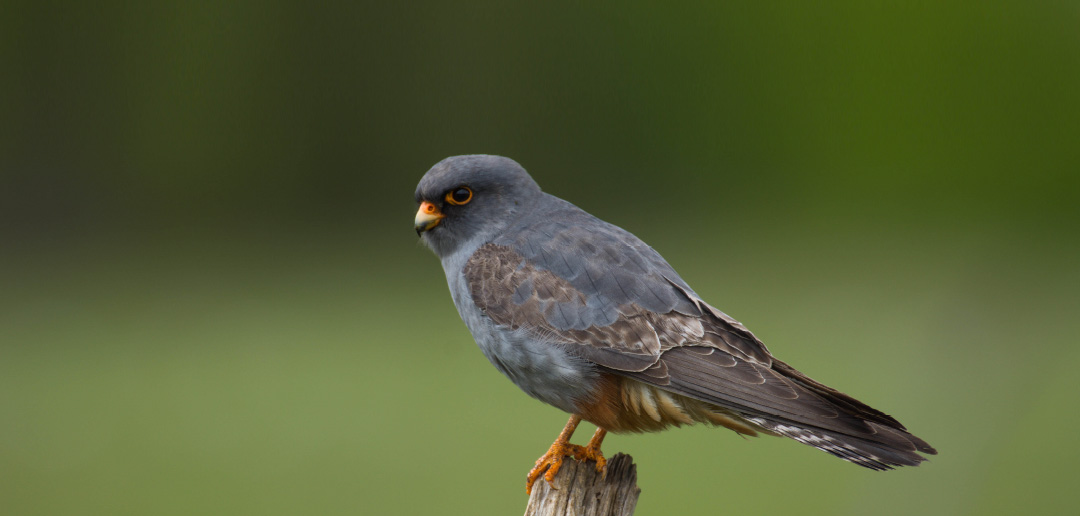
BIODIVERSITY
The Cursed Mountains are among the rarest and most characteristic mountain massifs of the Balkans in terms of floristic, faunal and vegetative richness. Although in spatial terms the Cursed Mountains belong to the region with continental climate, these are also under the influence of the Mediterranean climate, respectively sub-Mediterranean which penetrates through the Drini i Bardhe valley. Thus, in the lower parts of this mountain massif there is a modified Mediterranean climate, while in the higher parts it is alpine. This combination of sub-Mediterranean and continental climates have created a complex net of ecological conditions that have enabled the appearance and existence of rich and diverse flora and vegetation with the presence of woody, shrubby and herbaceous forms, among which a considerable number are relics, endemorelics and indigenous endemics of the Balkans and Europe. Apart from this, number does not include research on mosses, lichens and fungi.
Flora of the Cursed Mountains
The Cursed Mountains are characterized by extraordinary floristic diversity and is one of the floristic centers of the Balkans, especially in terms of floristic endemism. Their vascular flora in the part of Kosovo consists of 1,611 taxa (species and subspecies): 435 genuses, 105 families, 50 orders and 6 classes. According to the data, in the high peaks of the Cursed Mountains such as Gjervica, Lumëbardhi Mountains in Guri i Verdhë, Koprivnik, Neqinat, there are 255 endemic species and subspecies of the Balkans. From the Cursed Mountains flora, 19 plant taxa have been included in the Red List of Threatened Plants (IUCN, 1997). In the Cursed Mountains their number is over 90 endemic species.
Some of the endemic species of the Balkans in the Cursed Mountains:
1. Crepis albanica
2. Draba korabensis
3. Cerastium dinaricum
4. Sempervivum macedonicum
5. Euphorbia montenegrina
6. Lilium albanicum
7. Rumex balcanicus
8. Ranunculus scutatus
9. Geum bulgaricum
10. Viola elegantula
11. Ligusticum albanicum
12. Fumaria bonopartei
13. Teucrium arduini
Some of the Kosova endemic species in the Cursed Mountains
1. Sempervivum kosaninii
2. Cephalaria pastricensis
3. Astragalus fialae
4. Aconitum pentheri
5. Rubus ipecensis
6. Saxifraga scardica
7. Wulfenia blecicii
8. Centaurea nervosa
9. Thlaspi cuneifolium
10. Thymus rohlenae
Fauna of the Cursed Mountains
The Cursed Mountains are characterized by a fairly rich, heterogeneous, endemic and very interesting fauna. This faunal wealth of the Cursed Mountains, as the largest massif in the Balkans, is the result of the numerous influences of the Mediterranean, Euro-Siberian and Nordic-Alpine regions, as well as of the frequent changes of ecological conditions in the past. Species of mammals and birds that are quite rare for the Balkan region and beyond can be found in the territory of the Cursed Mountains. Many of them are relict, endemic, endangered, and therefore are on international protection lists.
The fauna of the Cursed Mountains based on up-to-date research consists of: 8 species of fish, 13 species of amphibians, 10 species of slides, 148 species of birds (thought to have over 200 species), 37 species of mammals. In the Cursed Mountains live 129 species of butterflies from the order Lepidoptera that make the region one of the richest in Europe for which it is also identified as PBA (Primary Butterfly Area).
The most representative species of Kosovo fauna living in the territory of the Cursed Mountains are: lynx (Lynx lynx), brown bear (Ursus arctos), roe deer (Capreolus capreolus), wild goat (Rupicapra rupicaprave), Mountain Eagle (Aquila chrysaetos), Falco naummani, Tetrao urogallus, Salamandra atra, Lutra lutra, Wolf (Canis lupus), wild cat (Felix sylvestris), etc.
Due to the large wealth of birds, as well as the passage of migratory routes through the area, the Cursed Mountains have also been identified as IBA regions (IBA- Important Bird Areas).











